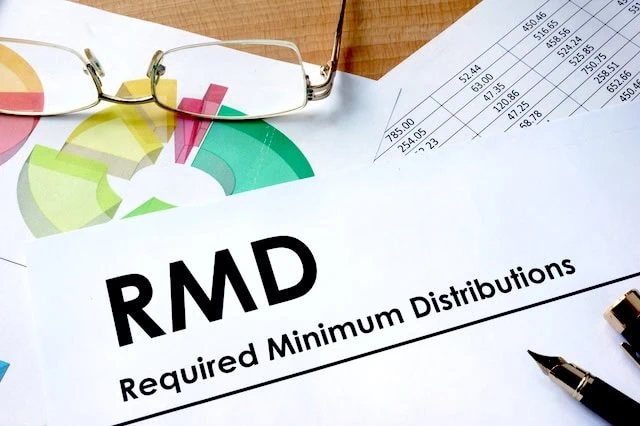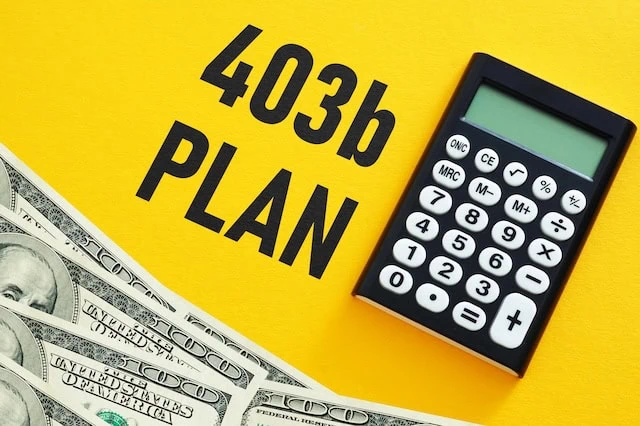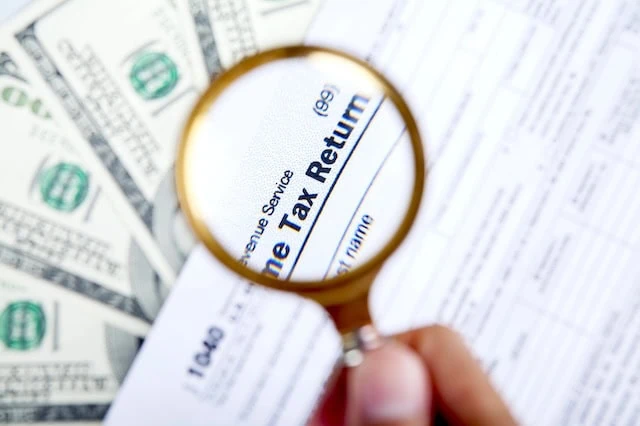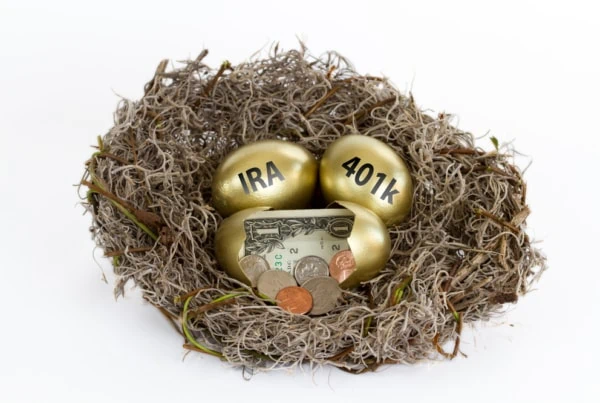You spend decades of your life stashing away money into retirement accounts. But one day, that switch flips, and you go from withholding contributions to withdrawing your hard-earned funds.
That day isn’t the same for everyone, and if you have multiple retirement accounts, that day could differ from one account to the next. But one thing’s for sure—if you’ve invested any of your funds in a traditional retirement plan like a 401(k) or individual retirement account (IRA), you can only wait so long before the rules will force you to start withdrawing, in the form of required minimum distributions (RMDs).
RMDs are a minimum amount that you must withdraw from certain retirement accounts each year when you reach a certain age. They’re a reality for most retirees, and they can have significant consequences for your tax obligations. They also involve a lot of rules and nuances that must be followed lest you absorb hefty tax penalties.
Today, we’re going to explain what RMDs are, how they work, what accounts have them, when you need to take them, how to calculate the amount each year, and more. Once you understand RMDs, you can draw up a plan to make stress-free, tax-optimized withdrawals each year.
Disclaimer: This article does not constitute individualized financial advice. The information appears for your consideration, not as a personalized recommendation. Act at your own discretion.
What Are Required Minimum Distributions (RMDs)?

A required minimum distribution (RMD) is a predetermined amount of money that the holder of certain workplace and individual retirement accounts must withdraw each year once they reach a certain age. That amount is based on a calculation using your account balance and government tables.
The money can be taken via one single withdrawal or several, as long as the amount adds up to the required total.
You can always draw more than the required minimum distribution in a year. However, doing so may increase your tax obligation, as withdrawals from traditional accounts are taxable. Also, taking more than your RMD for one year doesn’t reduce your RMD obligations in future years (other than reducing the account balance used to calculate future RMDs).
Do you want to get serious about saving and planning for retirement? Sign up for Retire With Riley, Young and the Invested’s free retirement planning newsletter.
How Do Required Minimum Distributions Work?

When we talk about RMDs, we frequently mention taking withdrawals from an account. That’s one way to take an RMD, but in reality, there are multiple ways to do so:
- Withdraw cash from the retirement account. If you don’t have enough uninvested cash in the account, you may have to sell, stocks, bonds, funds, or other assets within the account to have enough cash to withdraw. (Note: Some individual and workplace plans may not only allow for automatic withdrawals, but even calculate RMDs for you.)
- Make an “in-kind” transfer of shares from your retirement account to a taxable brokerage account. This allows you to remain invested, but you will still owe taxes on the transferred securities’ value, and your cost basis in any transferred securities will reset to the value at the time of the transfer.
- Purchase an income annuity. When you use assets to buy an income annuity, the lifetime income distributions from that annuity fulfill RMD obligations for those assets. (And in fact, a change created by the SECURE 2.0 Act made it so that annuity income can also offset RMDs from other accounts.)
- Purchase a qualified longevity annuity contract (QLAC). A QLAC is a deferred income annuity that lets you delay RMDs on the purchasing assets until age 85. (QLACs can also be used to lower taxes on your Social Security benefits.)
- Give to charity via a qualified charitable distribution (QCD). If you’re 70½ or older, you can use qualified charitable distributions (QCDs) from an IRA to donate to charity, and you can exclude that amount from your gross income. And once you’ve reached your RMD age, you can use assets from a traditional IRA to satisfy RMD requirements.
Actions such as purchasing a QLAC or donating via a QCD are often also referred to as ways to reduce RMDs. While they don’t technically lower the amount of RMDs you’re required to make, they satisfy RMD requirements without requiring you to directly withdraw cash while also providing other benefits.
Which Types of Retirement Accounts Are Subject to RMDs?

Generally, tax-deferred retirement accounts are subject to RMDs. You should plan to take RMDs from the “traditional” (read: non-Roth) versions of the following accounts:
- 401(k)
- Solo 401(k)
- 403(b)
- 457(b)
- Thrift Savings Plan (TSP)
- Individual retirement account (IRA)
- Simplified Employee Pension (SEP) IRA
- Savings Incentive Match PLan for Employees (SIMPLE) IRA
- SAlary Reduction Simplified Employee Pension (SARSEP)
Roth IRAs and designated Roth workplace accounts, such as Roth 401(k)s and Roth 403(b)s, do not have RMDs for the original account owner.
Beneficiaries of traditional retirement accounts generally are subject to annual RMDs but must liquidate the account within 10 years of the original account holder’s death. However, beneficiaries of Roth accounts generally only need to comply with the 10-year rule—they don’t have annual RMDs. (Note that there are some exceptions to the beneficiary rules, and that spousal beneficiaries typically have more flexibility.)
The IRS has a table outlining RMD rules for beneficiaries, but if you want to better understand your specific situation, you should talk to a financial advisor.
Related: Plan for These 7 Hidden Retirement Costs
When Must You Start Taking RMDs?

RMDs must be taken each year by a specific date, called a required beginning date (RBD), once you reach a certain age. Currently, that age is 73 for most accounts, but the beginning age for RMDs will shift—anyone who turns 74 after Dec. 31, 2032, will have a beginning age of 75.
Put differently: If you were born between 1951 and 1959, your beginning age is 73. If you were born in 1960 or later, your beginning age is 75.
Here are the RBDs for people who will begin required minimum distributions at age 73:
- The first distribution in the year after you turn 73: April 1 of the following year.
- All other distributions: Dec. 31 of that year.
In other words, if you turn 73 in 2025:
- Your first RMD (for age 73) is due by April 1, 2026.
- Your second RMD (for age 74) is due that same year, by Dec. 31, 2026.
- Your third RMD (for age 75) is due by Dec. 31, 2027.
That said, if you turn 73, you’re not required to wait until the following April to make distributions—any withdrawals made during the year can count toward your RMD for that year. So, sticking with the example of turning 73 in 2025 …
- You could take your first RMD (for age 73) as early as Jan. 1, 2025.
- You could take your second RMD (for age 74) as early as Jan. 1, 2026.
Whether you’d want to take RMDs earlier than the deadline is a different story. After all, every dollar you take out of your account is no longer able to grow.
If you’d be withdrawing that money anyway as necessary retirement income to pay the bills, you might benefit from withdrawing what you need throughout the year rather than taking everything out at the start of the year. And if you’re only taking RMDs because you’re required to, you’d want to avoid doing so until as late as possible to maximize the amount of time that money has to appreciate within the account.
Lastly, all of the above largely assumes you’re not working by the time you take RMDs. RMD rules for workers are a bit different. If you’re still working at age 73, you still have to take RMDs from traditional IRAs. However, most workplace plans allow you to postpone RMDs from your current workplace account until April 1 of the year after you stop working (as long as you do not own more than 5% of the business you work for). Normal RMDs generally still apply to prior workplace accounts, however.
Related: What Are Social Security Spousal Benefits [And How Do They Work]?
What Happens If I Don’t Take an RMD by the Deadline?

What happens if you blow past the RMD deadline without making the appropriate level of withdrawals?
Whatever portion of the RMD not withdrawn could be subject to an excise tax of 25%.
You can lower this tax to 10% if you correct the RMD within two years. You would need to file Form 5329, Additional Taxes on Qualified Plans (Including IRAs) and Other Tax-Favored Accounts, with your federal tax return for the year in which you didn’t take a full RMD.
You can have this penalty waived altogether if you can show that “the shortfall in distributions was due to a reasonable error and that steps are being taken to remedy the shortfall.” To do so, you would attach a letter of explanation when you file Form 5329.
Related: Don’t Make These Retirement Account Withdrawal Mistakes
How Do I Calculate My RMDs?

Retirement plan participants and IRA owners are in charge of withdrawing the correct amount of RMDs on time. While a retirement plan administrator or IRA custodian might calculate the RMD for you, the account holder is ultimately responsible for taking at least the minimum amount.
To calculate your required minimum distribution each year …
- Find the balance of your tax-deferred retirement accounts as of Dec. 31 of the prior years.
- Find your distribution period for the age you’ll turn in the current year. The IRS provides this information.
- Most people will use the Uniform Lifetime Table.
- If your spouse is at least 10 years younger than you and that person is listed as the 100% primary beneficiary (so, sole beneficiary) of your account for the entire year, then you can calculate your RMD with the Joint and Last Survivor Life Expectancy Table.
- Divide each account balance by the distribution period to find each account’s RMD.
Let’s look at a pair of examples:
Example 1: Adam, who is unmarried, turns 73 in October 2026. He owns a traditional IRA worth $200,000 on Dec. 31 of the prior year (2025). His first RMD is due by April 1, 2027. To figure out how much he would need to withdraw by that deadline, he would divide that balance ($200,000) by the distribution factor (26.5) on the relevant IRS table, which in this case is Table III. His RMD, due April 1, 2027, for that IRA is $7,547.17 ($200,000 / 26.5 = $7,547.17).
Example 2: Adam turns 74 in October 2027. He married Anne, who will turn 63 years old on the same day in October 2027, and is thus 11 years younger than him. Adam has named Anne the sole beneficiary to his traditional IRA. The value of his traditional IRA, to the happy surprise of a writer creating an example, was miraculously still $200,000 on Dec. 31 of the prior year (2026). His RMD for age 74 is due by Dec. 31, 2027. He divides that balance ($200,000) by the distribution factor (26.2) on Table II. His RMD, due by Dec. 31, 2027, for that IRA is $7,633.59 ($200,000 / 26.2 = $7,633.59).
By the way, if Adam decided not to make any withdrawals before April 1, 2027, when his first RMD was due, and he didn’t timely correct it within two years, he would be subject to the excise of 25% on the required amount ($7,547.17) that went unwithdrawn. So, he would owe $1,886.79 ($7,547.17 * 0.25 = $1,886.79). If he did correct the mistake within two years, his excise tax would be reduced to 10%, for a total of $754.71 ($7,547.17 * 0.10 = $754.71).
Related: How Long Will My Savings Last in Retirement? 4 Withdrawal Strategies
Calculating RMDs for Multiple Retirement Accounts

If you have multiple retirement accounts, you might be able to calculate your total RMD using the sum of all those account balances, then decide whether you want to withdraw from all, some, or just one of those accounts. Whether you can depends on the accounts you own:
- You generally must treat each workplace account separately. That is, you calculate your RMD for that account and withdraw from that account to satisfy the RMD.
- 403(b)s are an exception. You can calculate your RMD across all 403(b)s, then withdraw the total RMD from all, some, or even just one of your accounts.
- You can calculate your RMD across all traditional IRAs, then withdraw the total from as many or few of those accounts as you wish.
You can never calculate your RMD across different account types, however. For instance, you can’t determine your RMD by aggregating the account balances of two IRAs and a 403(b).
Are RMDs Taxed?

Yes, RMDs are taxed. The withdrawn amount is taxed at the account owner’s federal income tax rate.
Fortunately, people taking RMDs are usually in a lower tax bracket than they were in during their peak working years. But it’s still an expense that must be accounted for when budgeting for retirement.
Related: Am I Too Old for a Roth Conversion?
How Can I Reduce My RMDs?

You might want to reduce your RMDs for several reasons—most notably, though, reducing RMDs can help reduce your potential tax burden and keep your retirement assets growing.
You have a few RMD-reducing strategies at your disposal.
Some actions must be taken before retirement, such as investing in RMD-free accounts like Roth IRAs. Health savings accounts also have no RMDs, so you can invest in an HSA for retirement, too.
Other actions can be done before or during retirement. For instance, you can invest in non-qualified annuities, which aren’t subject to RMDs. You could also do a Roth conversion (or if you earn too much money to do so, a backdoor Roth conversion); however, Roth conversions can generate a high tax bill and can have more tradeoffs the older you are. For this reason, it’s best to consult with a financial advisor before taking on a Roth conversion.
There are also the alternative methods of satisfying RMDs I mentioned above, such as purchasing a qualified longevity annuity contract or giving to charity via a qualified charitable distribution.
Want to talk more about your financial goals or concerns? Our services include comprehensive financial planning, investment management, estate planning, taxes, and more! Schedule a call with Riley to discuss what you need, and what we can do for you.







![Should You Max Out Your 401(k) Each Year? [Yes...and No] 23 should you max out your 401k each year or invest elsewhere](https://youngandtheinvested.com/wp-content/uploads/should-you-max-out-your-401k-each-year-or-invest-elsewhere-600x403.webp)

